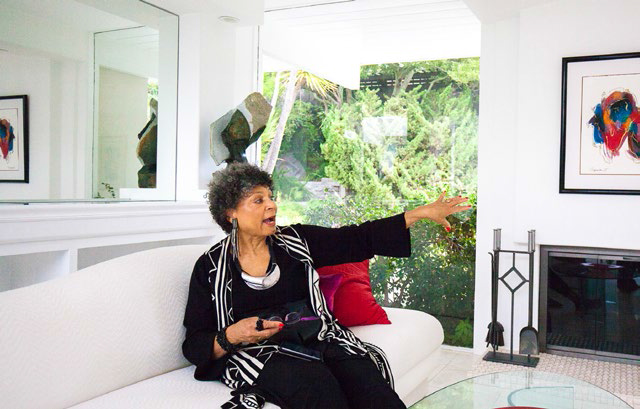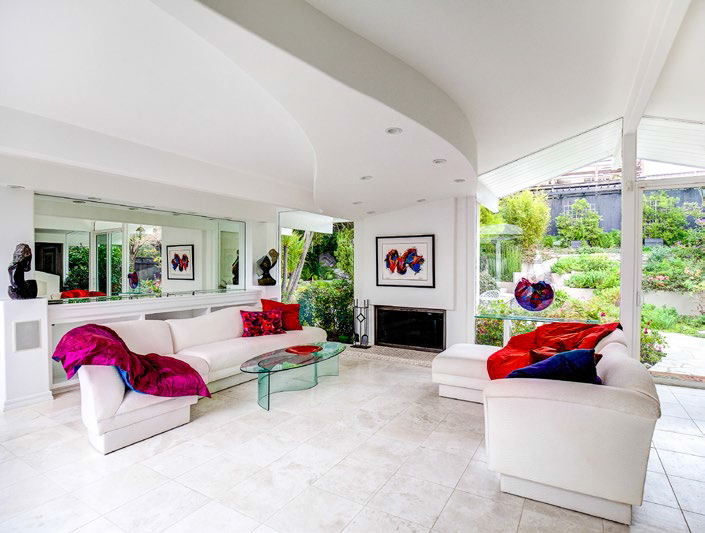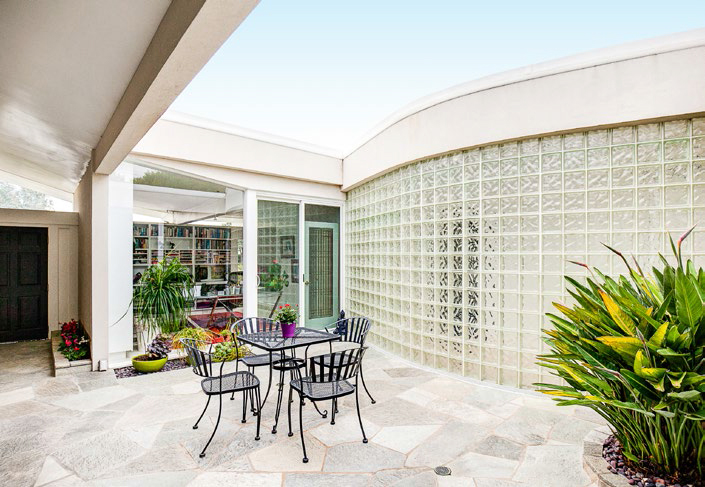Harmony in the Hills - Page 3
 |
 |
 |
|
|
|
|
The police were as shocked as the Abbotts were, but never caught the culprits.
Open housing was very much on people's minds at that time. The Rumford Act, which banned racial discrimination in housing, became state law in 1963, but a voter initiative killed the ban. By 1966 the battle over the measure had moved to the courts.
The Abbotts never dreamed of leaving the neighborhood, which was largely white but had a fair number of African-Americans. Nothing like that ever happened again, neighbors say.
The Abbotts had learned about Eichlers from another black couple they knew, who bought one in Palo Alto. Eichler was known for selling his homes to all races. "Because of his policy that was the only reason our friends in Palo Alto were able to buy a house," Alfreda says.
Lolita Morelli, an original owner in a Brown & Kauffmann, chose the neighborhood because it was integrated when she bought a new home with her family. A native of Oakland, she had been living in the 'all-white' town of San Lorenzo and teaching at a nearby elementary school in Oakland that was 97 percent black, she says.
"I saw the effects of discrimination," she says, adding, "We did not want to raise our children in that situation. We wanted to live in a neighborhood that was integrated to start with. Otherwise I would have been out there starting to integrate it."
In the 1970s, as Oakland—home to the Black Panthers—and the rest of the world were roiled by protests over war, civil rights, black nationalism, and other issues, white flight briefly hit Sequoyah Hills, says Mei Mei Spaulding, an original owner with her husband Jim, a psychiatrist.
"It was a period of great uproar in the country, and I think people didn't like uproar, so they moved," she says. One who moved told Mei Mei it was to avoid African-Americans. Others just said the schools were better in the mostly white cities on the other side of the hills, including Orinda and Lafayette.
Today the overall Sequoyah Hills neighborhood is diverse. Sandi Bethune, sitting with her friend and fellow association board member Lolita Morelli, ticks off the backgrounds of her neighbors: "Asian, Indian, bi-racial, black, white," Sandi says. "Not many Hispanics." "I'm Hispanic," Morelli says.
The neighborhood has much going for it besides diversity. It's close to I-580, which provides Gordy and his wife, Theresa Wray, with a half-hour commute to downtown Oakland. The tract is generally free of traffic noise, thanks to topography and to the ban on big rigs on the freeway.
Though car break-ins and car thefts have been problems, Sequoyah Hills is still considered a low-crime neighborhood, Sandi Bethune says, thanks in part to the homeowners association. If suspicious activity is seen, people hear about it on the active email tree.
Speeders on steep Hansom Drive and Surrey Lane fired up the association, which got the city to install speed bumps. Many mornings Lolita drinks her coffee outside on her lawn on Surrey. "I try to give people the evil eye when they come down the street flying," she says.




